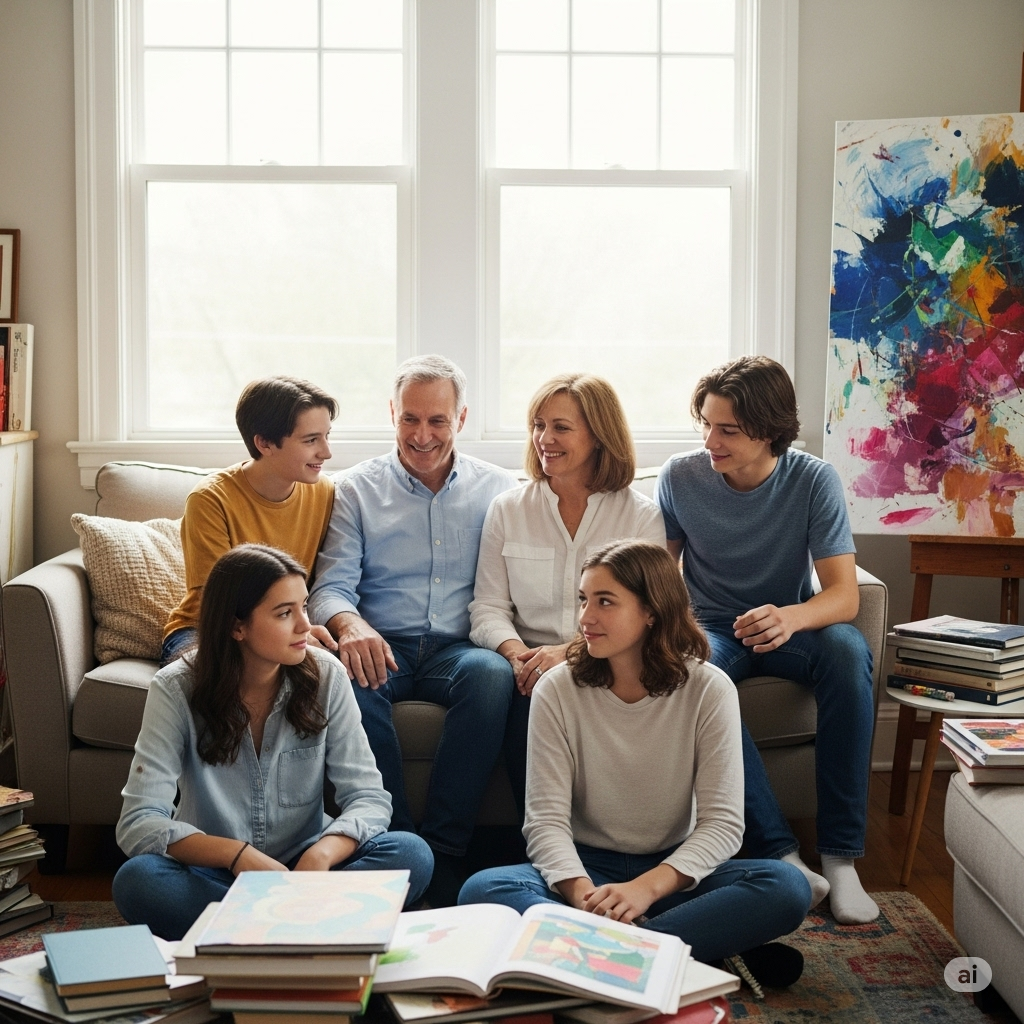Glitter-covered drawings, spontaneous dance performances, made-up stories at bedtime—children are naturally creative. Their imaginations are vibrant, messy, and limitless. But when creativity becomes about being “right,” “good,” or “the best,” it can quickly turn from joyful expression into pressured performance.
As parents, our role isn’t to perfect their art—it’s to protect their spark.
In this article, you’ll learn how to support and encourage your child’s creativity while avoiding the trap of perfectionism. The goal? A confident, curious thinker who creates for joy—not for approval.
Why Creativity Matters
Creativity builds far more than artistic skill. It supports:
- Problem-solving
- Confidence
- Emotional expression
- Resilience
- Curiosity and imagination
It also allows children to explore who they are in a world that often tells them what they should be.
1. Praise the Process, Not the Product
Instead of saying:
❌ “That’s the best picture I’ve ever seen!”
Try:
✅ “You spent a lot of time adding those details!”
✅ “I love how you mixed those colors.”
✅ “You kept going even when the glue was tricky—that’s focus!”
Focusing on effort, exploration, and persistence teaches your child that creating is about the process—not about being perfect.
2. Let Go of “Doing It Right”
Avoid correcting or redoing your child’s work to make it look “better.”
Instead of:
❌ “Trees aren’t blue, sweetie.”
Say:
✅ “I love your blue tree—what a fun idea!”
✅ “Tell me more about your drawing!”
Creativity thrives in freedom. There’s no wrong way to imagine.
3. Provide Open-Ended Materials
Give your child tools that invite exploration without specific outcomes.
Try:
- Blank paper and crayons
- Recyclables and tape
- Playdough or clay
- Fabric scraps, nature items, or cardboard
- Musical instruments and costume pieces
Let the materials inspire—not limit—the creation.
4. Create a Judgment-Free Zone
Make it clear that all ideas are welcome, even the wild or silly ones.
Say:
- “There are no bad ideas here.”
- “What else could we try?”
- “Let’s see where your imagination takes us!”
Encourage experimentation and celebrate risk-taking, not perfection.
5. Avoid Over-Scheduling
Children need downtime to dream, tinker, and get bored. Boredom is often the gateway to creativity.
Protect unstructured time by:
- Leaving open blocks in the schedule
- Reducing screen time
- Allowing “do-nothing” time that might turn into “make-something” time
Creativity needs room to breathe.
6. Ask Open-Ended Questions
Instead of guessing or assuming, invite your child to explain their creative work.
Try:
- “Can you tell me about what you made?”
- “What was the most fun part of this project?”
- “What would you do differently next time?”
This shows that their ideas matter more than your interpretation.
7. Celebrate Mistakes and Messes
Art is messy. Experiments fail. Ideas flop. And that’s okay.
Say:
- “Oops! That didn’t work like we thought—what can we try next?”
- “The best ideas come from mistakes sometimes.”
- “Look at how much fun we had, even if it didn’t turn out like we planned.”
Let your child know that mistakes are part of the creative process.
8. Display Their Creations with Pride
Hang up drawings, save stories, or dedicate a space for their artwork.
Not because it’s perfect—but because:
- It matters
- They tried
- It’s a part of who they are
This builds self-worth and ownership.
9. Avoid Comparing Their Work to Others
Even subtle comparisons can make your child question their creativity.
Avoid:
❌ “Look how neat your cousin’s drawing is.”
❌ “Your friend’s song was better.”
Instead:
✅ “What’s something you liked about your own project?”
✅ “It’s great that everyone’s work is different.”
Creativity isn’t a competition—it’s a form of self-expression.
10. Be a Creative Partner, Not a Coach
Join in without taking over.
Say:
- “Can I create alongside you?”
- “Let’s build something together—what should we use?”
- “Want to make up a story together?”
When you engage as a co-creator, not a critic, your child feels safe to explore and express freely.
Final Thought: Creativity Thrives in Safe Spaces
Your child doesn’t need to color inside the lines. They need to know that what’s inside them is worth expressing—exactly as it is.
So keep the glitter flowing. Cheer on the blue trees and upside-down castles. Protect the process.
Because when a child knows they’re free to create, they grow into adults who are brave enough to imagine new ideas, solve big problems, and stay true to themselves.
